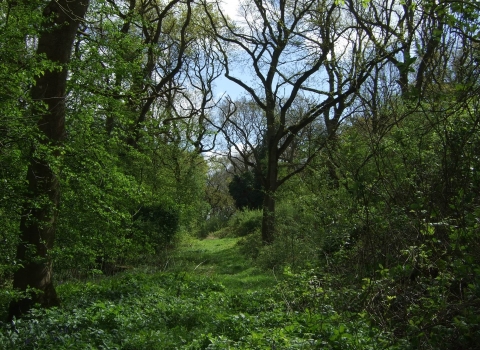Location
Know before you go
Dogs
When to visit
Opening times
Always openBest time to visit
SpringAbout the reserve
|
The parish of Launde lies in one of the most attractive and unspoilt areas of countryside in Eastern England. The landscape is made up of rolling hills, pasture, small streams, woods and numerous fox coverts, straight out of a children’s fairy-tale. Rich in history and wildlife, Launde contains an old priory set in parkland, a possible Norman motte and bailey castle site, medieval fish ponds (now re-flooded), the earthworks of a medieval deer park, two ancient woodlands and two Sites of Special Scientific Interest. A trip to Launde Woods is sure never to disappoint. Whether you’re admiring wildflowers or listening for nightingales, enjoying butterflies in the summer, indulging in a spot of ‘Shinrin-yoku’ (forest bathing) or looking for signs of badgers, the ancient atmosphere of this magical forest will soothe you and give you a truly wild experience. Give one of the oaks a hug -can you fit your arms around it? The Big Wood is one of the largest and most important semi-natural ancient woodlands in the East Midlands. It is situated on a hill top, with superb vistas of the surrounding countryside – a walk to admire the view is a must. Beneath the trees, you’ll see amazing displays of wildflowers in the spring. Wood anemone, bluebell, wood-forget-me-not, sweet woodruff, early-purple orchid and primrose are just a few of the more noticable species, while rarer ones include bird’s-nest and greater butterfly-orchids, nettle-leaved bellflower, herb paris and toothwart. Badgers have excavated at least two setts, so keep an eye out for their tracks, paw prints and latrines. Other mammals include stoat and weasel. Nuthatch can be heard singing in the spring, and purple and white-letter hairstreak butterflies will make the most of the dappled glades. Park Wood has largely been planted with conifers in the past, however where conifers have been removed you can now enjoy plants like ramsons, sweet woodruff and primrose. Towards the end of the summer the rare fragrant agrimony grows beside the main ride. The Park Wood is now larger than the Big Wood, although it’s wildlife has suffered greatly in the last 50 years. Many of the rides have become narrow and overgrown, and the coppice has been neglected. A major project to restore the ancient woodland has been undertaken which, it is hoped, will encourage other woodland owners to do the same. We have started to reintroduce traditional management to these woods, to benefit wildlife. Both the Park Wood and the Big Wood are very old, with massive boundary earthworks, huge coppice stools clearly centuries old, and many plants known to be confined, or nearly so, to ancient woodlands sites. Visitors are able to participate in practical work, guided walks and educational visits, learning about the history and wildlife of Launde. |
Contact us
Environmental designation
The Leicestershire and Rutland Wildlife Trust does not control the shooting rights to these reserves.

